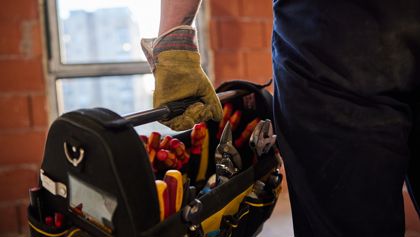How can we help you?
Dive into our knowledge
The Power of Thinking Together to Maximize Equipment Effectiveness
In delivering improved processes, we’ve found discussions are more powerful when performed in a right sized group.

Two recent conversations made me think ...
The first occurred during the Manufacturing Digitalisation Summit. I was privileged to host Round Table discussions with some amazing professionals, and had a passionate conversation with a good friend of mine who works in the diagnostic imaging department of a local NHS hospital, let’s call him Matthew.
During our pub chat that meandered through a plethora of topics, we got onto the subject of the turnaround times/throughput of a typical NHS diagnostic imaging “room” (ie X-ray machines and CT scanners). Yes, I know, not your typical pub conversation fare, but it turned out interesting, nonetheless. You see, the target for these exceptionally busy and overworked staff is to process 4 patients per hour, or 1 every 15 minutes. Matthew pointed out that the actual work time of each machine is approximately 20 seconds for each of those 15-minute appointments. The rest of the time is spent answering patient questions, reassuring them of the intimidating environment and setting them up to be scanned. An Overall Equipment Effectiveness, (OEE) of 2.2%!
These machines cost upwards of £300k each. They are manned by highly skilled and well-trained individuals, typically for 2 shifts a day, 6 days a week. The individuals themselves are keen about providing a good service, desiring to exceed patient expectations. They are also terrified about being put under more pressure as their physical working environment doesn’t permit a greater “efficiency”.
The second conversation I had at The Manufacturing Digitalisation Summit, Birmingham - was equally interesting. There were some amazing speakers, particularly Steve Evans, (University of Cambridge) who cuts through to core challenges. Clare Sibley, (Williams Racing), inspiring in her achievements and drive to use the best talents – regardless of circumstances/background. And Claire Aitchison (Druck) with some brilliant quotes on prioritsation and getting stuck in. I particularly remember the following:
Now, what’s clear is that the UK has some amazing professionals. If we can just point our collective brainpower at a problem, we can make a real difference. Let us imagine that some of the above individuals looked at the NHS as a supply chain problem, a manufacturing throughput problem, if you like. If lean principles were applied, and they focused on reducing the changeover time and increasing the OEE, do you think they, (and yourself) could make a difference? Do you think bringing in a new perspective could be valuable? Someone empowered to have a vision and change it. Someone who looks at the problem in a different way and sparks thought and inspires and enables true change.
I would expect we would all start with documenting the activities, then look at where there are bottlenecks or improvement opportunities (waste?). I would also expect we would look to understand which activities need doing in the presence of the diagnostic imaging device and which can be done without it. In short, I think we would build a set of operations, and a production line that optimises this expensive resource without impacting the overall experience, throughput, or quality.
Technology, in this case, is an enabler to the solution. Can we better document/explain the situation so that patients are reassured with technology? Can we change the environment to make them feel more comfortable? Can we work on their “set-up” prior to entering the room of the scanner?
There are examples of potential synergies across our client base:
In delivering improved processes, we’ve found discussions are more powerful when performed in a “right sized” group. Such as when the team contains varied ages, experiences, and capabilities but also when both suppliers and the customers of the process are included. The conference showed how Airbus have even extended this thinking into their suppliers. Looking at the interface between companies and how they might streamline the interactions and eliminate duplication of effort or second guessing.
Having the ability to identify similarities between clients has been a privilege. Having the exposure to conferences, such as that delivered by The Manufacturer, allows me to learn more and take those experiences into HSO’s clients, thereby delivering better advice, systems and processes and outcomes. I encourage you to enjoy these experiences and embrace the learnings from others (all freely given).
How to make your Microsoft project a guaranteed success
More information
How can we help you?
Dive into our knowledge
